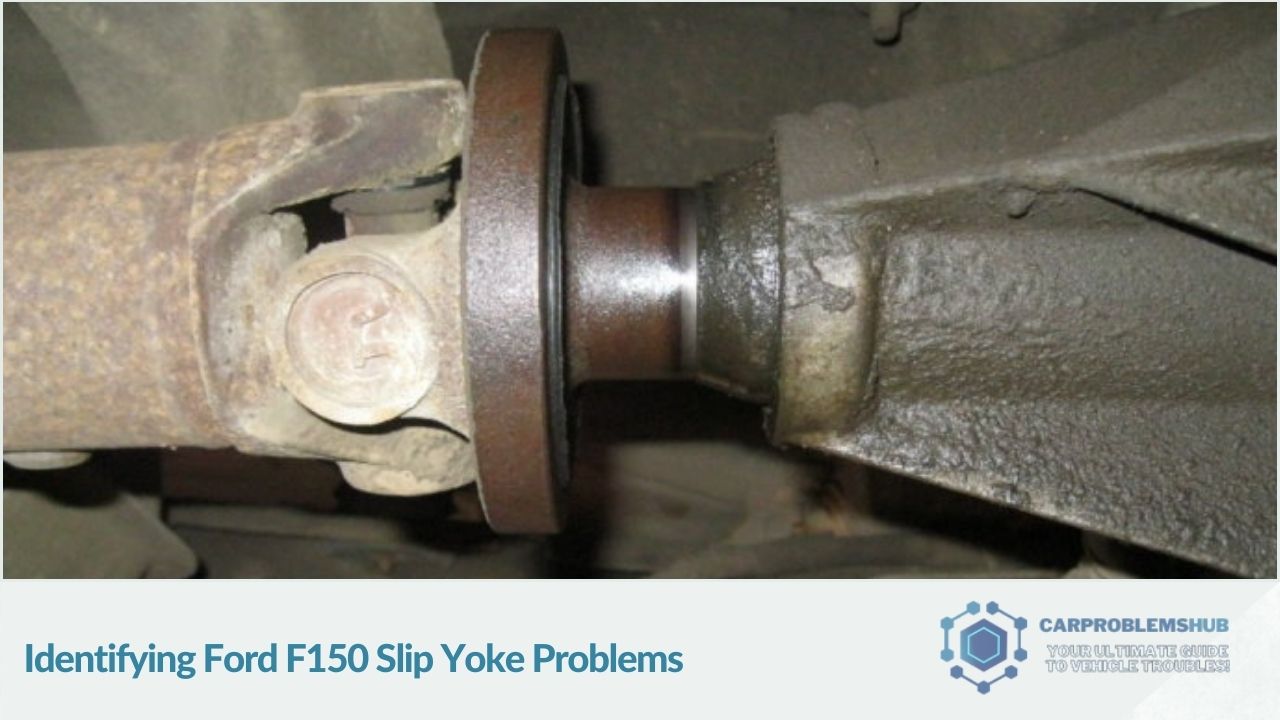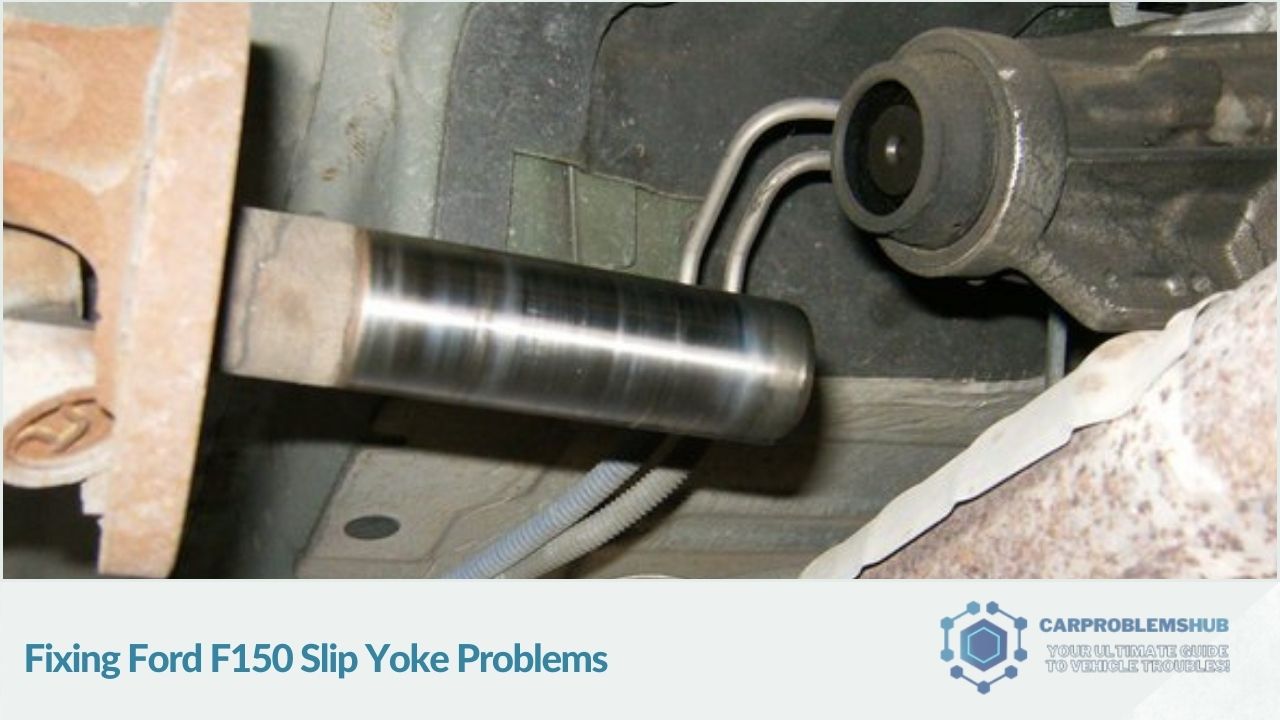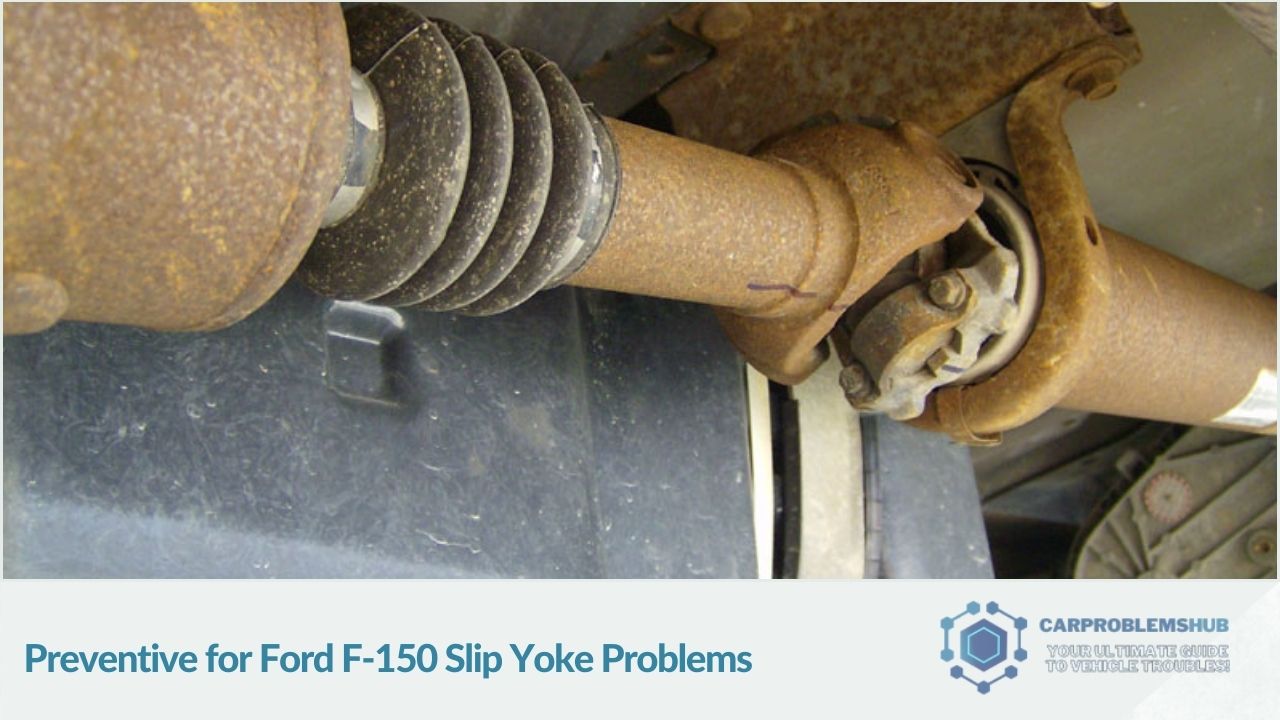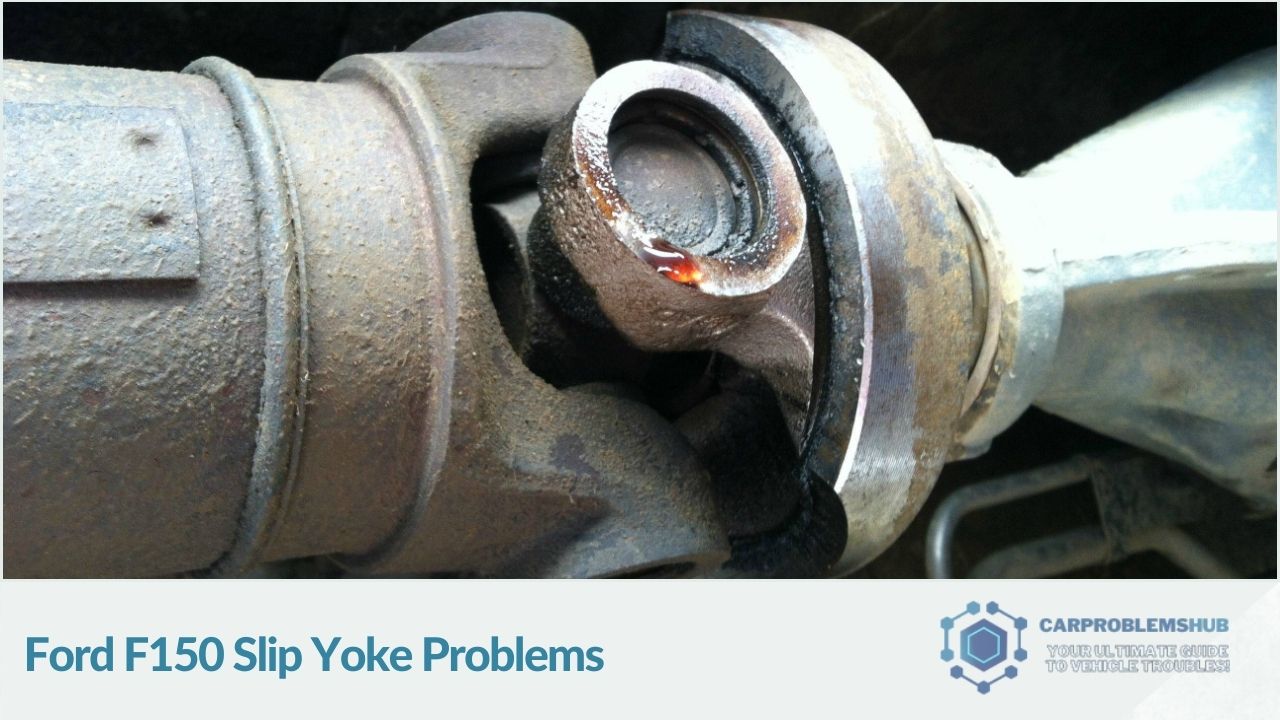The Ford F-150’s rear differential houses an integral part known as the slip yoke. This component is essential for the seamless operation of the driveshaft, especially during turns or when the truck encounters uneven surfaces. Over time, however, the slip yoke can deteriorate, causing various issues.
This article explores the symptoms, causes, potential fixes for Ford F150 slip yoke problems, and preventive measures to avert slip-yoke malfunctions.
⚡️Another article: Jeep Wrangler ABS Module Problems: A Guide to Solutions
Identifying Ford F150 Slip Yoke Problems

A prominent indicator of a failing slip yoke in a Ford F-150 is a distinct clunking sound when the vehicle navigates bumps or makes turns. This noise originates from the slip yoke losing its grip on the driveshaft.
Other signs of slip-yoke issues include:
- Unusual vibrations at the back of the truck
- Challenges in gear shifting
- Reduced vehicle power
- Smoke emerging from the rear differential
🚀Recommended article: Navigating Ford 4.6 Spark Plug Problems Effectively
What Leads to Ford F-150 Slip Yoke Issues?
The slip yoke’s deterioration is often a result of normal usage. Yet, several other elements can hasten its wear, including:
- Incorrect fitting during installation
- Physical damage from impacts
- Rust and corrosion
- Pollutants in the differential fluid
Fixing Ford F150 Slip Yoke Problems

To rectify a defective slip yoke, replacement is the only viable solution. This task can be undertaken by a professional mechanic or by a skilled DIY enthusiast with the necessary tools.
When substituting a slip yoke, selecting a superior quality replacement is crucial. Additionally, inspecting the driveshaft for potential damage is important, as any issues would require a replacement.
Preventive for Ford F-150 Slip Yoke Problems

Several measures can be taken to forestall slip-yoke failures, including:
- Regular inspections for wear or damage
- Using the appropriate differential fluid
- Avoiding excessively rough terrains
- Steering clear of hauling heavy loads
🚨You may be interested in: GMC Body Control Module Problems: A Detailed Guide
Last Words
Slip-yoke complications can significantly disrupt the performance of a Ford F-150. Awareness of the symptoms, causes, and solutions is key to preventing these issues and ensuring the smooth running of your truck.
Further Resources
Beyond this article, numerous resources can assist in understanding Ford F-150 slip-yoke problems. The Ford F-150 forum is an excellent source of shared experiences from other truck owners. Additionally, the Ford F-150 owner’s manual offers guidance on inspecting the slip yoke for wear or damage, thus aiding in maintaining the vehicle’s optimal condition.
Was this page helpful?


Similar Problems in Other Models
Ford 6.7 Diesel Problems (7 Common Issue)
Ford F150 Transmission Solenoid Problems and Troubleshooting
Ford Duratorq 2.2 Diesel Engine Problems and Solutions
Ford HF35 Transmission Problems and Troubleshooting
P2872 Ford Focus Problems, Solutions and Costs
Ford Escape CV Joint Problems, Causes and Costs
Ford DEF Pump Problems: Causes, Symptoms, and Solutions
Ford 4.6 Spark Plug Problems and Solutions
Ford Super Duty Drag Link Problems and Repair
Ford Intelligent 4WD Problems and Solutions
Car News and Reviews
Would you like to take a look at the car news and reviews we have carefully selected and published for you?
2024 Lucid Air Prices Go Down
GM's Big Road Network for Hands-Free Driving
DTC C0561-71 Vacuum Sensor Code on GM, GMC and Chevy
C1201 Code Toyota and Lexus (Causes and Solutions)
Chrysler Auto Start Stop Warning Light (Causes and Solutions)
2024 Ford Mustang GT: Digital Age Meets Classic Power
The 2024 Chevrolet Silverado 2500HD ZR2: An Off-Road Marvel
2024 Chevy Colorado ZR2 Bison: The Ultimate Off-Road Experience
The 2024 Lucid Air Sapphire Track Drive Experience
2024 Subaru Forester Review, Specs, Price, Release Date